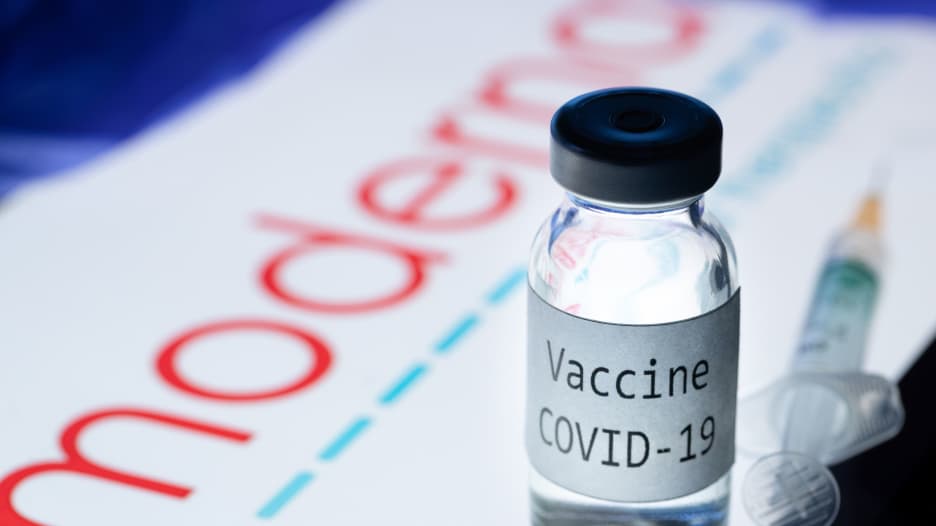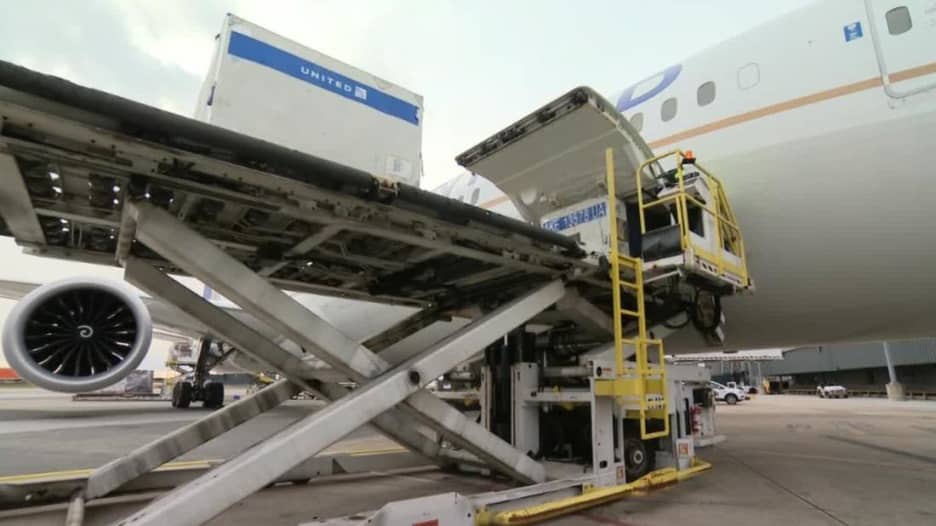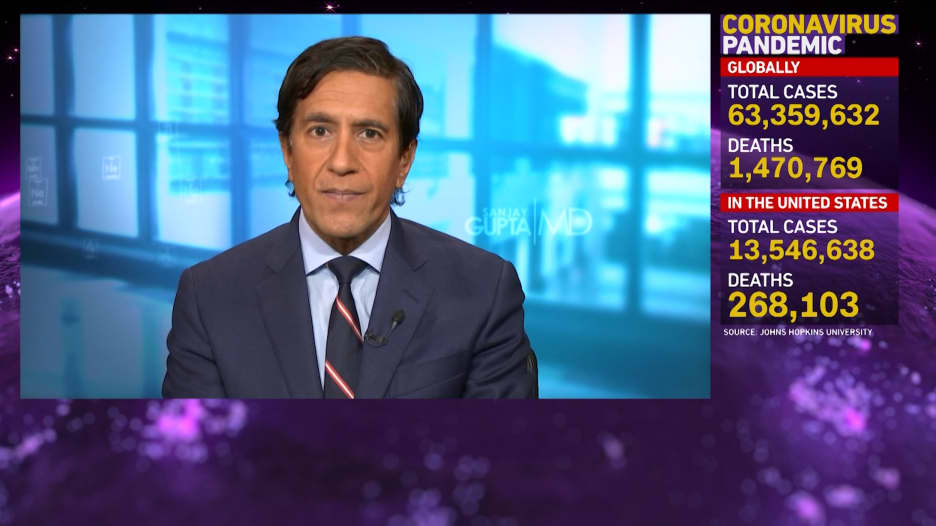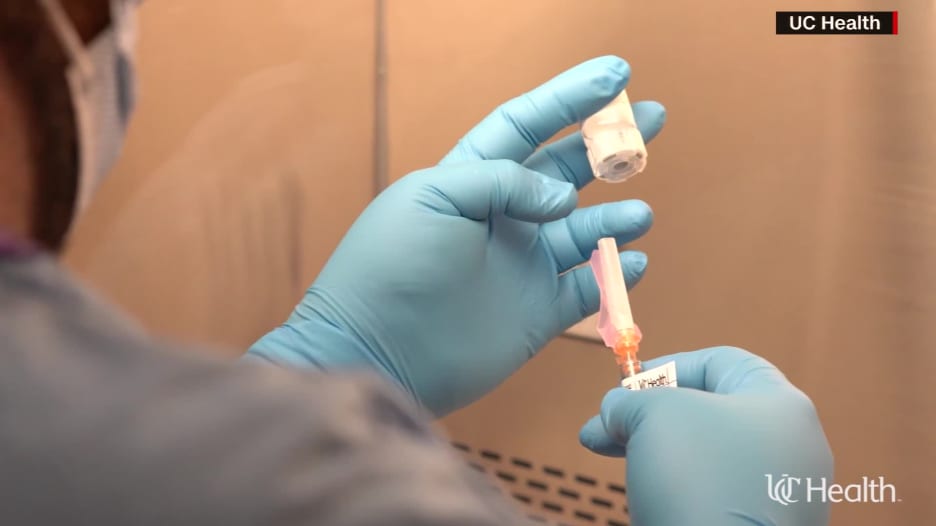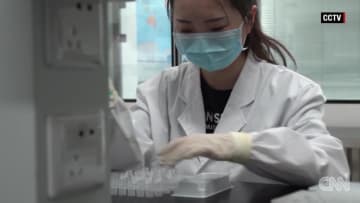دبي، الإمارات العربية المتحدة (CNN) -- بعد تداول الأخبار عن فعالية ثلاثة على الأقل من اللقاحات التجريبية ضد فيروس كورونا، وفقاً للمعلومات الصادرة عن مطوري اللقاحات، كيف يتم تطوير هذه اللقاحات؟
وفيما يلي نظرة على التقنيات التي تقف وراء تطوير بعض اللقاحات المنتظرة ضد "كوفيد-19"
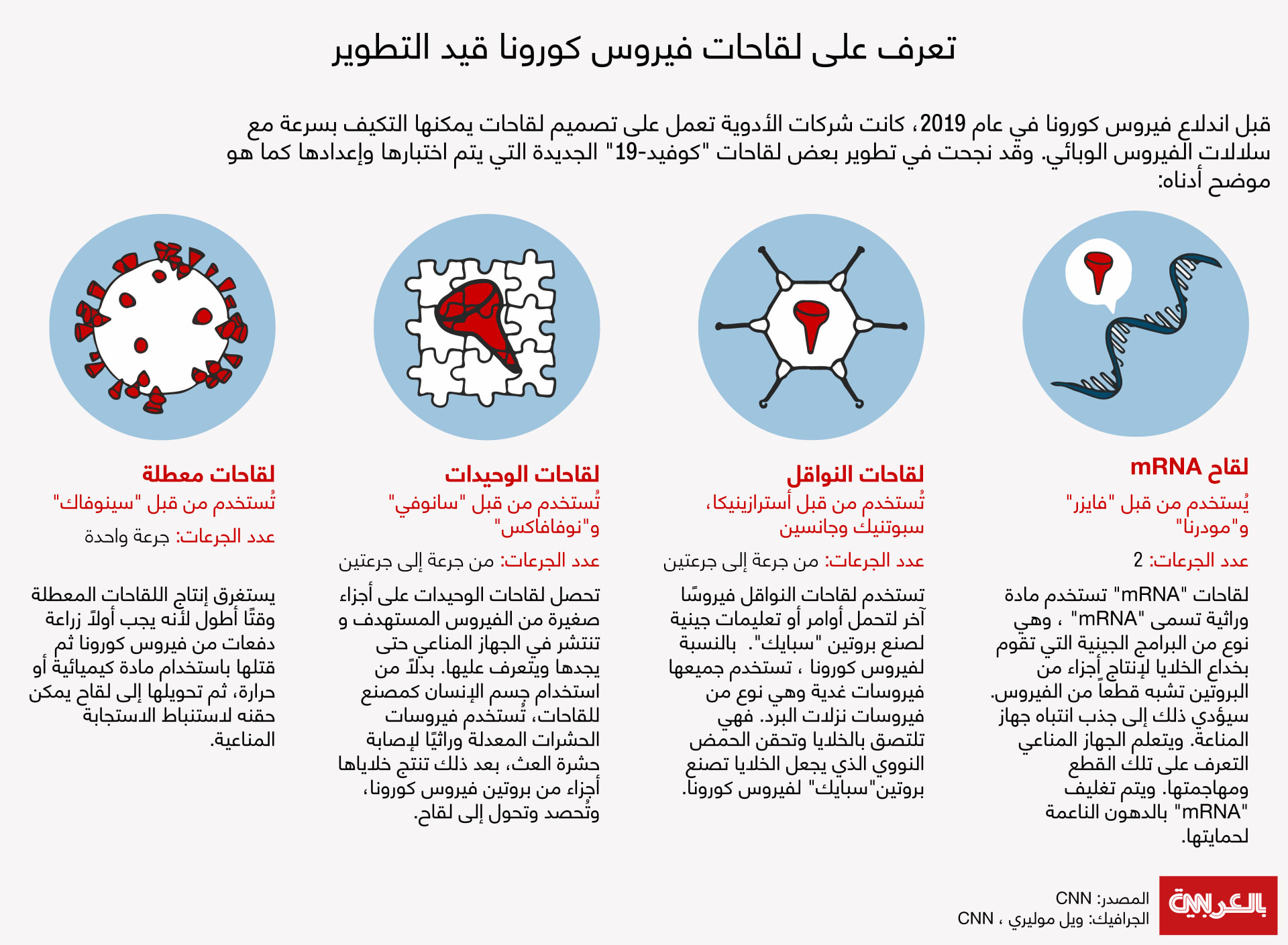
ويستخدم لقاحا "مودرنا" و"فايزر" مادة وراثية تُعرف باسم "الحمض النووي الريبوزي المرسال"، أو "mRNA"، لتحفيز الجسم على إنتاج أجزاء من البروتين تشبه قطع من فيروس كورونا وتحفيز الاستجابة المناعية، وهي تعد تقنية جديدة لم تُستخدم في اللقاحات الحالية.
ويعد "الحمض النووي الريبوزي المرسال" هش للغاية، لذا فهو مغلف بجسيمات نانوية دهنية، يمكنها أن تذوب في ظروف درجة حرارة الغرفة. ولهذا السبب يجب تخزين لقاح "مودرنا" في درجة حرارة 20 - درجة مئوية، أو لمدة تصل إلى 30 يوماً عند درجتين إلى 8 درجات مئوية، أي درجة حرارة ثلاجة منزلية قياسية.
أما بالنسبة إلى لقاح "فايزر"، فيجب تخزينه في درجات حرارة شديدة البرودة تبلغ حوالي 75 - درجة مئوية. ويستخدم في غضون خمسة أيام بمجرد تبريده في درجات حرارة أعلى.
ويستخدم لقاحا شركة "سينوفارم" و "سينوفاك بيوتيك" كل منهما نهجاً قديماً أثبت فعاليته منذ فترة طويلة في لقاحات أخرى، مثل لقاحات شلل الأطفال والإنفلونزا. وتستخدم لقاحات فيروس كورونا الخاصة بهما فيروساً كاملاً معطلاً لحث الجسم على تطوير استجابته المناعية، ولا يحتاج سوى إلى تخزينه في درجات حرارة الثلاجة القياسية، أي من 2 إلى 8 درجات مئوية.
ويمكن حفظ لقاح شركة "كانسينو بيولوجيكس"، الذي يستخدم فيروسات البرد الشائعة، ويسمى الفيروس الغدي، لنقل البروتين الشائك من فيروس كورونا إلى خلايا الجسم، في درجة حرارة تتراوح بين 2 إلى 8 درجات مئوية.
ويجب الحفاظ على درجات الحرارة المطلوبة في جميع مراحل نقل اللقاحات، منذ لحظة مغادرتها منشأة الإنتاج إلى مرحلة التخزين في المطار، وأخيراً خلال مرحلة التوزيع العالمي.




